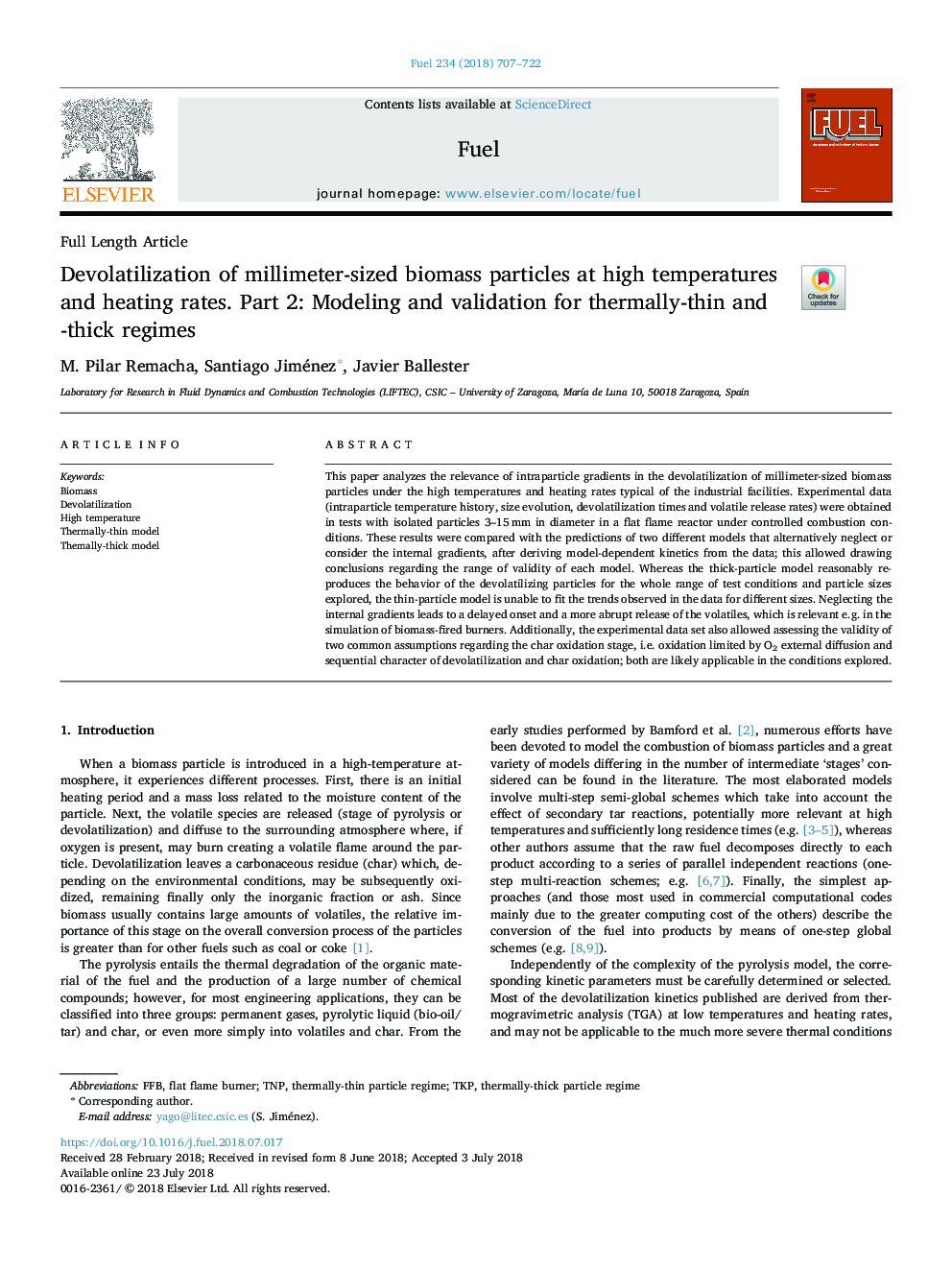| Article ID | Journal | Published Year | Pages | File Type |
|---|---|---|---|---|
| 6630092 | Fuel | 2018 | 16 Pages |
Abstract
This paper analyzes the relevance of intraparticle gradients in the devolatilization of millimeter-sized biomass particles under the high temperatures and heating rates typical of the industrial facilities. Experimental data (intraparticle temperature history, size evolution, devolatilization times and volatile release rates) were obtained in tests with isolated particles 3-15â¯mm in diameter in a flat flame reactor under controlled combustion conditions. These results were compared with the predictions of two different models that alternatively neglect or consider the internal gradients, after deriving model-dependent kinetics from the data; this allowed drawing conclusions regarding the range of validity of each model. Whereas the thick-particle model reasonably reproduces the behavior of the devolatilizing particles for the whole range of test conditions and particle sizes explored, the thin-particle model is unable to fit the trends observed in the data for different sizes. Neglecting the internal gradients leads to a delayed onset and a more abrupt release of the volatiles, which is relevant e.g. in the simulation of biomass-fired burners. Additionally, the experimental data set also allowed assessing the validity of two common assumptions regarding the char oxidation stage, i.e. oxidation limited by O2 external diffusion and sequential character of devolatilization and char oxidation; both are likely applicable in the conditions explored.
Related Topics
Physical Sciences and Engineering
Chemical Engineering
Chemical Engineering (General)
Authors
M. Pilar Remacha, Santiago Jiménez, Javier Ballester,
